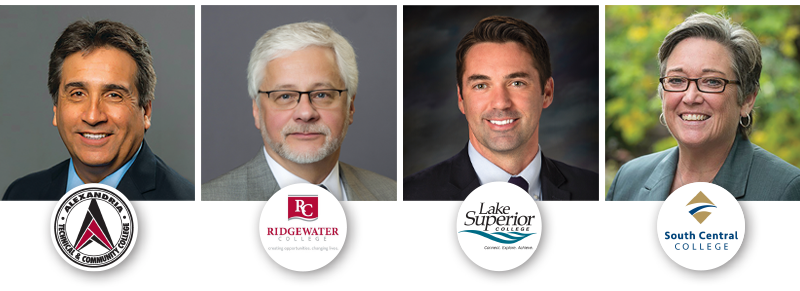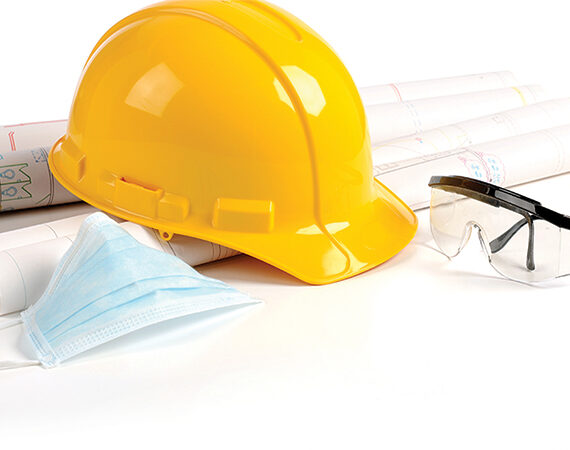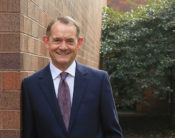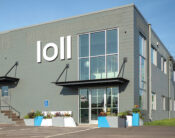
It’s hard to overestimate the impact the state’s technical colleges have on the manufacturing industry.
In a very real sense, they are training tomorrow’s workforce, tomorrow’s leaders, tomorrow’s innovators.
But like everything else in this new normal, the coronavirus pandemic has the education sector reeling and trying to navigate uncharted waters. With students returning to technical schools, colleges are trying to deal with uncertainty on multiple fronts, including enrollments, funding, and the evolving messages high school students receive about the value and future of work in the manufacturing industry.
Enterprise Minnesota hosted a virtual roundtable with high-ranking officials from technical colleges around the state. In a wide-ranging discussion, they revealed that technical colleges are very much prepared for what is sure to be an unusual semester, but a lot of questions remain unanswered.
Among the participants were: Michael Seymour, Alexandria Technical and Community College president; Craig Johnson, president of Ridgewater College in Willmar; Daniel Fanning, vice president of institutional advancement and external relations at Lake Superior College in Duluth and executive director of the Lake Superior College Foundation; and Kellie McElroy Hooper, dean of career and technical education at South Central College in North Mankato.
Enterprise Minnesota: As you approach the beginning of your first fall semester in the age of COVID-19, give us a status report on enrollments.
Daniel Fanning: We are down a little bit. We were down quite a bit more a few weeks ago, especially a couple of months ago when COVID first hit. Our applications essentially stopped. In the system, we are down 9-10%. For us and specifically for Lake Superior College, we’re down 5-10%. We’re seeing a pretty good rebound right now. We anticipate there’s going to be a lot of last-minute registrations. And we’ve got a lot of students who are either talking about that gap year, or talking about just taking some part-time credits now, a few classes here or there, some online, some on campus, then coming back full time.
Manufacturing, specifically, was an area that was hit really, really hard in the spring because those students were sent online and, of course, that just doesn’t work for some of our online programs. So we were kind of nervous about losing some of those students, but the good news is a lot of them actually came back in the summer once the governor gave us the authority to finish those students out. We had about 90% of those students come back, and we’re seeing a pretty good retention number for the fall for those trades programs because we’re fortunate here in Duluth, as I know the other presidents are in their communities, too, where we know that there are still jobs in our backyards. Students know that. For the most part, our manufacturing numbers are pretty solid, and overall we’re down a little bit, but we’re anticipating a pretty decent jump back in the next couple of weeks.
Mike Seymour: The college in the last five years has trended downward anywhere from 2-3%, I guess, on average. Manufacturing has trended a little beyond that, so both applications and acceptance of manufacturing students have been down and will be down again this fall.
Manufacturing represents about 12% of our newly enrolled students, so I don’t know where the final numbers will land. Last spring, we used the area manufacturers to help us teach a lot of the students and give them experiences they could bring back to the program to make sure as many students who can graduate on time did.
We actually took a chunk of our CARES Act money and created a bucket called, “Get Over the Finish Line,” and so in that bucket, we’ve been able to assist students financially in the areas of law enforcement and diesel and welding to come back over the summer and finish because they were in some of the program areas that couldn’t finish remotely. So they’ve been made whole financially, and everybody, for the most part, has come back to keep pace with their program.
Craig Johnson: One of the most frustrating things here at Ridgewater was that we had experienced a decline in enrollment from 2011-2019. We had lost about 30% of our students during that time period. That’s a huge blow. But this past year, we had turned that around and we had about a 2% growth, and then COVID hit.
And so what’s really sad to see is that pre-COVID the morale boost, people feeling good about the reorganization we had done, and the redesign of our recruiting and retention efforts, was having a positive impact. And now with COVID, we’ve bounced back and forth in our comparison date to date, this year to last year. We bounce back and forth between being up 5% and down 5%. It’s like a pingpong ball, depending on what week you look at it, what date you look at it. Certain events and recruiting efforts have to line up sort of all over the map.
I also am concerned, as we go into the semester, that we may have a share of students who are willing to try our new hybrid format, or try to do things in a different way, or do some courses fully online that normally would have been face to face, but then drop out into the semester because it just isn’t what they want. They want to wait and have courses face to face.
So, I would say the next four to six weeks at least are critical, and we won’t have a really solid sense until maybe even Oct. 1. The next couple of weeks are critical.
Kellie McElroy Hooper: Enrollment right now is doing better. We’re running middle of the pack with the sister schools in the system. We started out pretty bad, at a low of 50% enrollment, but right now we’re hovering somewhere between 10 and 15% down from last year.
Where we’re seeing the biggest decrease in enrollment is in the career and technical education programs. For certain ones, students aren’t ready to come back yet unless they know they’re coming back to hands on. That’s the anecdotal information we’re getting. We’re doing a lot to make contact with the students because we do plan on doing face-to-face instruction in the labs, while turning everything else that is not hands on to the online format.
It’s been getting better the last two weeks. We’ve really had a big bump in enrollment. So, I think that people are getting to the point where they’re like, “OK, school’s going to be starting in a few weeks. We probably should register.”
EM: Are specific programs affected differently? Something that requires hands-on learning is going to be really hard to do online. Are you able to track the enrollment that way? Can you see that some programs are way up or down? And if so, which ones?
DF: Our students are very adamant that, particularly in these trades programs, they want to be on campus. It’s really hard to teach a welding class or an aviation class online. But now we have that permission to have those courses on campus with the restrictions in place, such as social distancing and 25 students per class. We’re seeing that enrollment bounce back in the trades programs, manufacturing and specifically health care, and even some of our carpentry programs. We were looking at some pretty significant decreases here a couple of months ago. But those are the programs that have bounced back.
CJ: We may have students who drop because they look at courses they plan to take and find out what’s going to be hybrid, or it’s not going to be fully face to face the way they had hoped.
We’re doing our best to talk with them, communicate with them and get them to understand that we have a very effective plan for this, and it can work, but we’re not yet sure. A number of our manufacturing and trades programs are strong, but some were struggling for quite a while, and we’ve been looking at them. For example, carpentry we cut back from a two-year program to a one-year program because there just was not the interest, the student demand or the workforce demand for that two-year degree.
Welding has the same kind of challenges, and we’re looking at that and saying, “Should we revise that two-year program to handle that in a different way?” We’re looking at adding customized training in welding. The only program that seems to be level and growing a little bit in that regard is machine tool. But we’re really finding in the last several years good reason to look at the design of our curriculum and ask, “Should we create more of a stackable series of smaller credentials that build to a two-year degree, or should we consider not having a two-year degree and going to a one-year degree or a series of certificates?”
Automation is the most recent one we’re looking at. Do we really focus on workforce skills rather than a two-year degree? But that’s been going on for a while, that’s not because of COVID. That’s because of trends out there with employers and with hiring.
KMH: Our liberal arts and science program took a huge bump this summer. So, we were up overall in the institution over 10% in enrollment. I pulled some numbers on that, and it was people coming from the larger university institutions back home for the summer. We usually have that bump, but not to the extent that we had this year.
Not all the CTE programming is running low. Some of them are, and some of them aren’t. Our automotive is at par, our machining is at par. It’s just getting the message out to the students is really what we’re trying to do. And we’ve been contacting students personally, working with the admissions and enrollment with new students.
What we did do that was kind of unique is that instead of having a typical advising and registration session where faculty work and meet with the students, and then we have all the enrollment advisers and financial aid, we kind of bypassed that, and we had the students go ahead and do their online orientation. And then they could register right away.
EM: COVID has wreaked havoc on every sector of society. We’re guessing technical colleges haven’t escaped that. Have you re-examined or scaled back any program offerings because of COVID?
DF: Prior to COVID we were actually going the exact opposite direction. We have a bonding project that was going to expand and relocate our manufacturing campus because that program had been growing for several years now. We’re still pushing that. Even though we’re seeing a little bit of a flattening with the enrollment to that program, we know that it’s eventually going to come back. So at this point, we’re really just kind of waiting to see. We haven’t eliminated any programs. We’re just kind of watching the trends. We’re seeing some programs go up, some programs go down. But that literally has been changing by the week. At this point, we have not made any knee-jerk reaction.
MS: No plans for any program eliminations. We’re looking at a couple new health programs for fall of ’21. But nothing being looked at for elimination in terms of current programming.
EM: The world is getting increasingly used to Zoom and other virtual meeting platforms becoming a part of our daily lives. Is Zoom a viable tool in the technical college world?
MS: Using Zoom for administrative kinds of things and even in advising ranks now, I think, got more common. But the tool I think we’re focused on for fall, primarily in order to get the 25 or less in a classroom, is a technology called Owl (a Zoom-like program that actually places a 365-degree pivoting camera inside the classroom to allow more flexibility with screen time). I don’t know if other schools are using Owl technology. It’s an all-encompassing device that you hook up to the computer in the room and then it sort of follows whomever is talking, and it has a high-end sound system and a camera. And so we’ll actually have students on campus taking a lecture. They want to be in the classroom, but they’ll be sitting maybe in the cafeteria or in some other remote location, and the faculty member would be using the Owl to project themselves across the Internet to the students.
That’s one of the benefits I would say of COVID, if there’s been an upside to this. A lot of the trade, technical faculty members who were not indulging technology probably to the extent they should have were forced into a crash course last spring. And as a result, the tech skills of all of our folks have gone higher.
CJ: I would agree with that. I think Zoom is just the beginning of where this might go with new technology and new platforms. I’ve experienced on my own — in terms of meetings and interaction — a higher degree of participation, better quality, better feedback. We could have conversations via Zoom while people are using the chat feature. More people I think are feeling that they have a voice. People who don’t speak up in a group will put something in chat, or they can send it privately. All of that, I’ve found, has increased participation in meeting discussions.
And I’ve heard anecdotally from faculty that they were surprised in spring that some of them actually reported an increase in attendance and an increase in participation partly because of that new kind of format. I’ve been very vocal in our college that, even if COVID disappeared tomorrow, we should not go back to exactly the way we were. We need to learn from this, how to use technology, we need to spring forward with the opportunity we had to get students, faculty and staff to experience this, and this is a wonderful learning opportunity. We can’t go back to the way we were.
That doesn’t mean we wouldn’t go back when we can to fully face-to-face classes. We will and we need to. There are certainly program areas that need that and always will. But it would be a shame to just lose this, because we have discovered opportunities here. I’ve even had students say how much they hated the idea, but by the end of spring semester they could see where certain courses and certain aspects of their learning were enhanced by this experience.
EM: How concerned are you about the state’s looming budget deficit?
KMH: We’re actively looking at the classes and the programs and how we might be able to consolidate them, maybe remove, have layoffs of faculty and programs that aren’t at the sustainable enrollment. I will say that South Central College President Annette Parker has been very forthright and has had weekly or biweekly meetings for COVID throughout this crisis at which time she does lay out the budget for the entire school and anybody who wants to can join the Zoom and see how the budget looks with a 20% decline in enrollment, with 15%, with 10% — just to communicate those things to people so that when and if we have to do those types of things that they are able to understand where we’re coming from.
MS: I inherited here a very robust program review process. It’s really a business metric that they put together for academic programs, which faculty here have, I guess, accepted. I think what they appreciate about it is they can see the profit/loss in their programs, and they’ve agreed to the measures in terms of how much appropriation is brought in and attributed to their program and how much tuition comes in and is distributed. And it shows the expenses and they can debate whether they should incur those or not.
But at the end, it says your program is either profitable or it’s taking a loss and losing for a few years, so something has to happen, whether that’s a revision, streamlining things, or a partnership with a high school — something the faculty need to embrace to keep their programs on the books. But a lot of that stuff had happened before I got here, and so it was really tight and the programs that are still standing here are pretty solid.
EM: One of technical education’s greatest success stories is the way it partners with industry to benefit the students, the school and the employers. What is the status of those partnerships? Are they as robust as they used to be?
KMH: Our partnerships are key to our success. Even during COVID, when we could not even come onto campus, we had students completing some of their projects and competencies at the employer site. And so we’ve just been able to work really closely with businesses and the chambers. Dr. Parker has been able to really leverage those relationships to the benefit of South Central College. And we have been quite responsive to their needs, and I think that in turn makes a good partnership.
Welding was a program that started up about five years ago. They built it up slowly, started working with some of the welding programs in the industry. And we got some allocation from the state to do a building redesign — but not enough to do what we really needed to do. And these industry partners stepped up, gave us the money, and we were able to build a state-of-the-art lab in that particular program, and some others, too.
DF: Partnerships is really where we shine, and we’re really fortunate to have great partners, not just in Duluth, but throughout the region of northeast Minnesota. And as many of you know, prior to COVID, this area was just buzzing, particularly in the manufacturing side. And some of our partners (Moline, Altec and Loll Designs), these were companies that were doing multi-million dollar expansions that, ironically, are currently either idled or close to idled.
But we know the jobs are going to be there when this dust settles, so just to have those kinds of partners in our backyard that invest in our programs, that serve on our advisory councils, that serve on our board and foundations — that’s great for Duluth.
MS: The manufacturing community here is very, very strong. And we need skilled workers. I don’t know if we’ll ever fully satisfy their needs. A number of our students come from greater distances, so they often come and they’re sponsored by a company in their hometown who’s paying their tuition. And so then they go home and they fulfill their obligation for that. But not all of them. And so what we’ve tried to do is engage our local manufacturing group and match the workforce development grants that were provided by the state in addition to the match. So $2,500 the first year coming from the state, a promise of the $2,500 scholarship coming in the second year from a local employer, and with the caveat that the students spend part of their summer in a paid job with that particular company.
We call it Workplace Learning Scholarships. We’ve been able to place a number of students in one of our local manufacturing facilities who are now coming to get their second year of training. The local manufacturer had the opportunity to get to know these students and their capabilities, and the students in turn are getting their tuition underwritten a bit. That initiative has been very successful for us, and some of the manufacturers who didn’t participate want to try to get in on this.
EM: Are high school educators and parents seeing a greater value in technical education? Is there a trend either way?
MS: It’s a message being pushed statewide and nationally. Are families getting it? Not sure. Part of it, I think, if we look at manufacturing again is, I don’t know if we’ve done a good job yet of explaining what exactly manufacturing all entails. We’ve tried to package it under integrated manufacturers. I don’t know if that helps or hurts.
I think sometimes just saying CNC (computer numerical control) helps people remember what it is more than anything. I think for us, it’s the way we talk about what is manufacturing, and then explain how those jobs have evolved and are very technical and computerized, and you work in clean environments, and the pay is good. I think the wheels are turning on that. I think we’ve made some progress. But I think we have a ways to go yet.
CJ: People will often say, “The one- and two-year degrees in tech ed and those career paths, they’re great. Why don’t people understand that?” And they really mean sincerely what they’re saying. But often the behavior really is, “But not for my kid. It’s for somebody else’s kid.”
And so do we really believe what we’re saying? Do you really practice that? There’s still that stigma about, “Is that good enough? Is that what people really want to pursue, rather than something else?” And I think we’re still at that tipping point of making that shift, and really being perceived in a holistic way and across the board, genuinely, as a real education and career path opportunity. And I think we have to own that part of it, and that could involve how we revise our program design. We could probably do a better job of not so much preparing in narrower niches but preparing in program clusters and program pathways, where it gives people more of an opportunity to move further along in a degree as well as move around in a broader path. So they might not feel as much at risk of committing to that trade, and what if 10 or 15 years down the road that job’s not there anymore, or that industry goes away, and suddenly somebody is left underemployed or unemployed.
We need to find a way to show that we’re building a foundation that people can build on, and if they do the right thing and we design it the right way, they’ll be just fine. But I don’t think we’re anywhere near that yet. So I think we have to redesign what we do, tell our story better, and get more people to back what they say. Because some of the same people who say we need these workers might be the same people whose kids are going on to something else. They’re not getting a one- or two-year degree to do tech ed careers. How do we stop talking out of both sides of our mouth?
KMH: Educators seem to be getting more on the path of understanding that the one- or two-year degree credential is going to be something that is attractive to students. Parents are the last ones to come along. Here’s something that’s positive: Faribault and Shakopee both voted in their elections to increase the funding so that these kinds of career and technical education classes can come back into the high school.
In Faribault, they increased the seventh hour. It’s about an $800,000 increase that they saw, just to add this extra seventh-hour period, and then they’re looking at the programming and how they can get the students in a pathway that coincides with them continuing their education, maybe getting industry credentials.
And Shakopee actually not only did that, but they got a brand-new high school that is totally geared to clusters. So I think that shows that parents are understanding it a little more. They’re putting their money out there and voting for these tax increases.
…
Featured story in the Fall 2020 issue of Enterprise Minnesota magazine.


